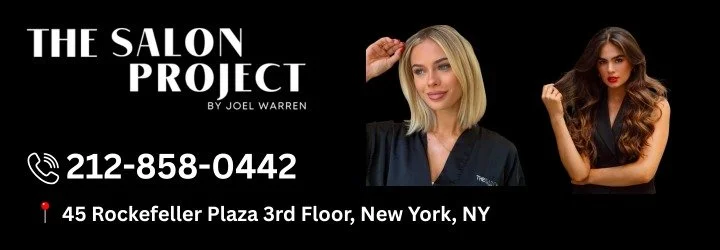How to Reverse Balayage: A Complete Guide to Restoring Your Natural Hair Color
How to reverse balayage is a question many hair enthusiasts ask after experimenting with highlights or lighter shades. Whether you’ve had balayage for months or years, understanding how to safely reverse the process is essential to maintain healthy and vibrant hair. In this article, we’ll guide you through the techniques, considerations, and tips for reversing balayage, with insights from experts at The Salon Project by Joel Warren.
Understanding Balayage and Its Effects
Balayage is a hair coloring technique where color is hand-painted onto the hair, creating a natural, sun-kissed look. Unlike traditional highlights, balayage grows out more subtly, reducing the appearance of roots. However, because balayage involves lightening your hair, it can sometimes alter your natural hair tone significantly. Over time, you may want to return to your original color, either partially or fully.
Reversing balayage is not just a matter of washing your hair—it requires a careful approach to avoid damage. The process can involve toning, color correction, or even a full dye application. Hair professionals, such as those at The Salon Project by Joel Warren, emphasize that reversing balayage should be tailored to your hair’s current condition, texture, and color history.
Signs You Should Reverse Balayage
Before diving into techniques, it’s important to identify whether your hair is ready for a balayage reversal. Some common indicators include:
Uneven tones that clash with your natural color
Hair damage from repeated bleaching
A desire to return to a darker or more uniform color
Fading highlights that no longer look fresh or flattering
If you notice any of these signs, consulting with a professional stylist is recommended. At The Salon Project by Joel Warren, color specialists evaluate your hair thoroughly before suggesting the best approach for reversing balayage.
Techniques for Reversing Balayage
1. Toning to Adjust Hair Color
Toning is one of the simplest methods to reverse or soften balayage. A toner can neutralize unwanted shades, such as brassiness, and help blend the highlights with your natural hair color.
Process: A stylist applies a color-correcting toner that counteracts the lighter shades.
Benefits: Minimal damage, subtle results, and enhances shine
Considerations: May require multiple sessions for significant color changes
Toning is ideal for those looking to slightly darken their hair or correct uneven balayage without undergoing a full dye process.
2. Color Correction for Deeper Changes
If you want to revert to a significantly darker shade or remove the visible contrast of balayage, color correction may be necessary. This process involves applying a base color that matches your natural shade, often mixed with a demi-permanent or permanent dye.
Process: A professional stylist applies the new color carefully to avoid patchiness and ensure even coverage.
Benefits: Restores a natural, uniform color
Considerations: Can be more damaging than toning; requires high skill to prevent overprocessing
At The Salon Project by Joel Warren, stylists use advanced techniques to ensure that color correction maintains hair integrity while delivering a seamless, natural result.
3. Highlights and Lowlights to Blend the Hair
Another subtle way to reverse balayage is by adding highlights and lowlights strategically. This technique can help blend the lighter streaks with the natural color, reducing contrast and creating a more balanced look.
Process: Low-impact colors are applied to match or darken lighter strands, while lowlights add depth to your natural hair.
Benefits: Gradual transformation, maintains dimension, less chemical stress
Considerations: Multiple sessions may be needed for complete blending
This approach is particularly recommended for individuals who want a soft transition back to their natural color without dramatic changes.
4. Hair Masks and Treatments to Prepare for Recoloring
Healthy hair responds better to any coloring process. Before attempting to reverse balayage, using deep conditioning treatments and protein masks can strengthen strands and minimize breakage.
Process: Apply nourishing masks weekly, focusing on dry or damaged ends
Benefits: Enhances hair resilience, improves color absorption, restores shine
Considerations: Essential step before chemical treatments like coloring
The stylists at The Salon Project by Joel Warren often recommend a series of treatments prior to any corrective coloring to ensure optimal results.
Maintaining Healthy Hair Post-Reversal
Reversing balayage may leave hair slightly more fragile due to previous lightening. Post-color care is crucial for maintaining hair health:
Use sulfate-free shampoos and conditioners
Minimize heat styling to prevent additional stress
Schedule regular trims to remove split ends
Incorporate nourishing oils or serums for added hydration
Following these practices ensures that your hair not only regains its natural color but also stays strong and vibrant over time.
Why Professional Help is Essential
While there are DIY methods to reverse balayage, professional expertise is highly recommended. Incorrect application can lead to uneven tones, overprocessing, or breakage. At The Salon Project by Joel Warren, expert colorists use a combination of precision, quality products, and individualized plans to safely reverse balayage and restore your desired look.
Their approach includes:
In-depth hair assessment
Customized color formulas
Step-by-step application to minimize damage
Post-color maintenance guidance
Conclusion
Reversing balayage is a process that requires patience, precision, and professional guidance. Whether you’re aiming for a subtle adjustment or a complete return to your natural hair color, understanding the methods and preparing your hair properly can make a significant difference.
At The Salon Project by Joel Warren, clients receive personalized care that ensures healthy, beautiful hair, even when reversing complex color techniques like balayage. By combining toning, color correction, and proper hair care, you can confidently restore your hair while keeping it vibrant and strong.
If you’ve been considering reversing balayage, consulting with a professional stylist is the safest way to achieve the transformation you desire while protecting the integrity of your hair.



